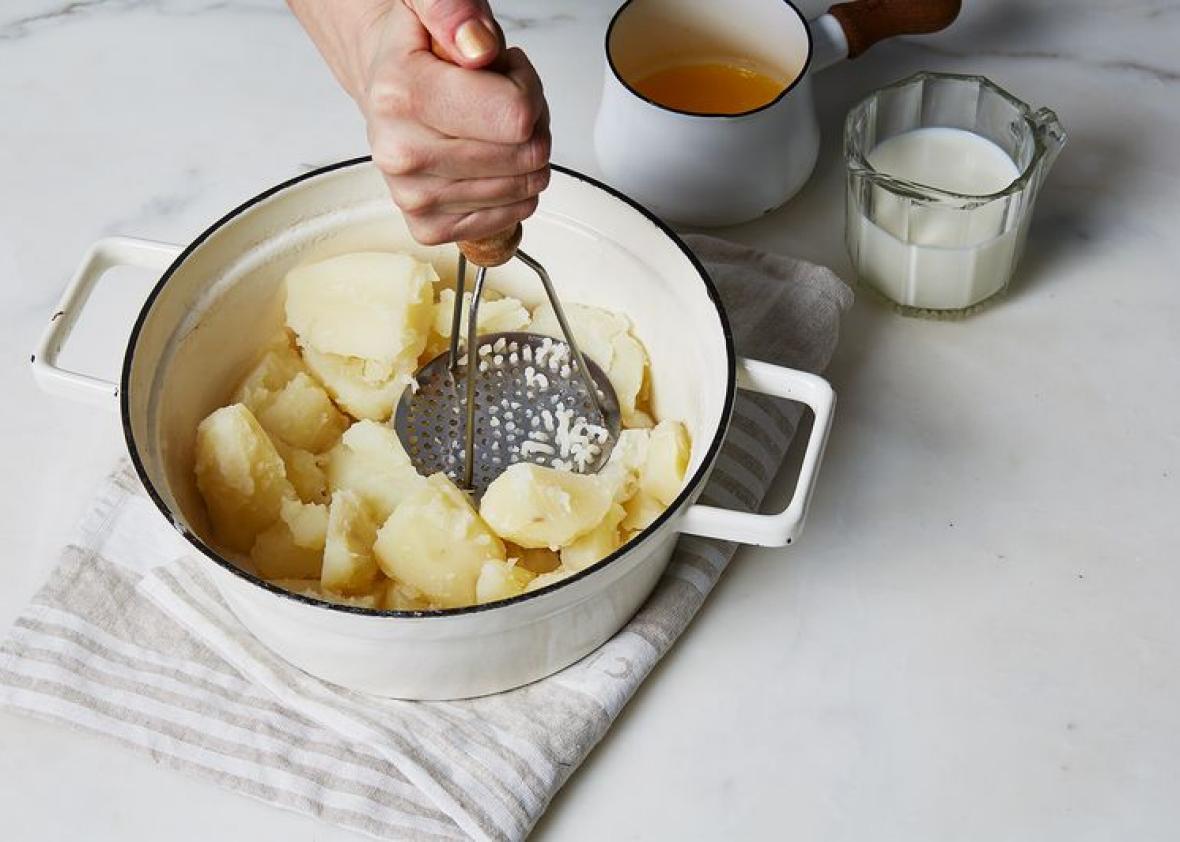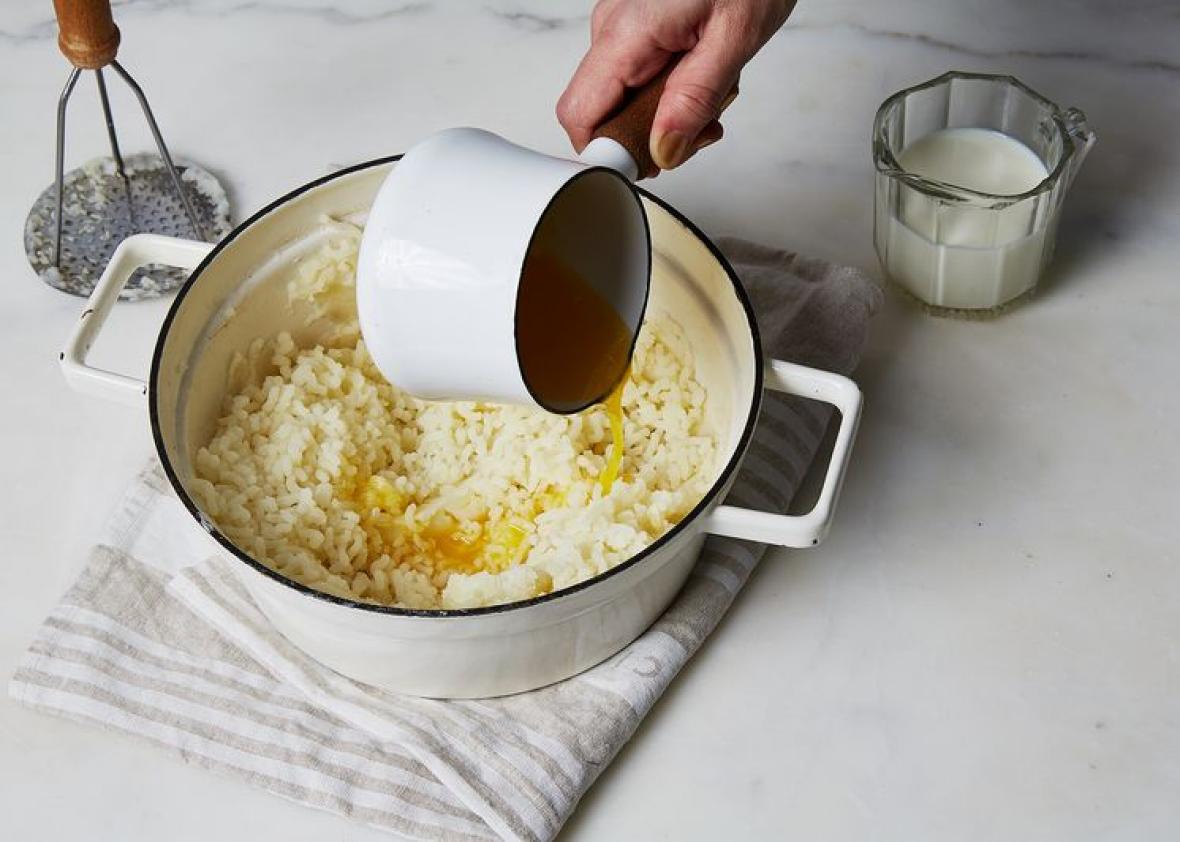This post originally appeared on Food52.
A few years back, I assumed the One True Genius Mashed Potato Recipe was going to be the Jeffery Steingarten method of heating, then cooling, then heating the potatoes again, so that the starches have a chance to firm up and settle (or retrograde) in between, becoming impervious to gluey-ness. Everyone was talking about it.
Until I made them. And I knew that I would never make them again.
I never wanted to wait to boil potatoes twice for mashed potatoes. It’s not that I resist work in the kitchen. It’s because so many other kinds of mashed potatoes—riced, crushed with any number of silly looking tools, whipped with your grandma’s vintage hand-mixer—are already great. Any improvements to the mashed potato experience were lost on me after the temperature-monitoring and pot-shuffling of this too-smart-for-its-own-good technique.

Bobbi Lin
So when Diane Morgan, Beard Award–winning author of Roots and the forthcoming Salmon, among other cookbooks, wrote to me about a much simpler, much more under-the-radar mash trick of hers, inspired by a conversation with food scientist Shirley Corriher, my genius antennae perked up:
When making mashed potatoes, it is typical to see a recipe suggesting that the milk and butter be heated together, simmering the milk and at the same time melting the butter. That mixture gets added to the just-mashed, cooked potatoes. Easy enough, right? However, using the same quantity of milk and butter, but [by] heating them separately and adding the melted butter first to the mashed potatoes, you end up with a butterier tasting potato dish. The fat absorbs into the cells of the potato, which have swelled and pulled apart from one another. Then, the milk loosens and flavors the potatoes.
So I tried a side-by-side test, adding the butter, then the milk vs. milk and butter in one pot, to see if I could detect a difference—and I could! The butter-first mash did taste more buttery and rich, despite identical ingredient lists.

Bobbi Lin
I tried to justify this by wading through my food science manuals and phoning a friend but couldn’t find much other than admonitions about putting potatoes in food processors which forces swollen starch granules to spill out of their cell walls and turn the mash to glue. (Has anyone of you ever actually done this? Everyone seems to think we’re at extreme risk of succumbing to the temptation.)
But, aside from dirtying one more vessel (either a small pot or microwaveable anything), this falls under the banner of “why wouldn’t you do it?” Unlike marching potatoes from boiling water to dry pot to boiling water, this requires virtually nothing of you to get a better result, and you get to feel that you have hacked the very molecules of the potato. And that’s where you find the real genius.
Diane Morgan’s Classic Mashed Potatoes
Recipe adapted slightly from Dianne Morgan.
(Serves 8)
4 large russet potatoes (about 2 pounds total)
1 teaspoon fine sea salt
¾ cup milk
6 tablespoons unsalted butter
Freshly ground pepper
See the full recipe at Food52.
More from Food52:
- The Weirdly Comforting Precursor to Cinnamon Toast Crunch
- How to Make a (Fancy!) Mousse Cake, Step by Step
- A Refreshing Cucumber Salad that Brings the Heat
- 9 Ways to Turn Hardboiled Eggs Into Dinner
- Shakshuka Focaccia is the Brunch You Dream Of
- A Mashup of Nachos and Chilaquiles
